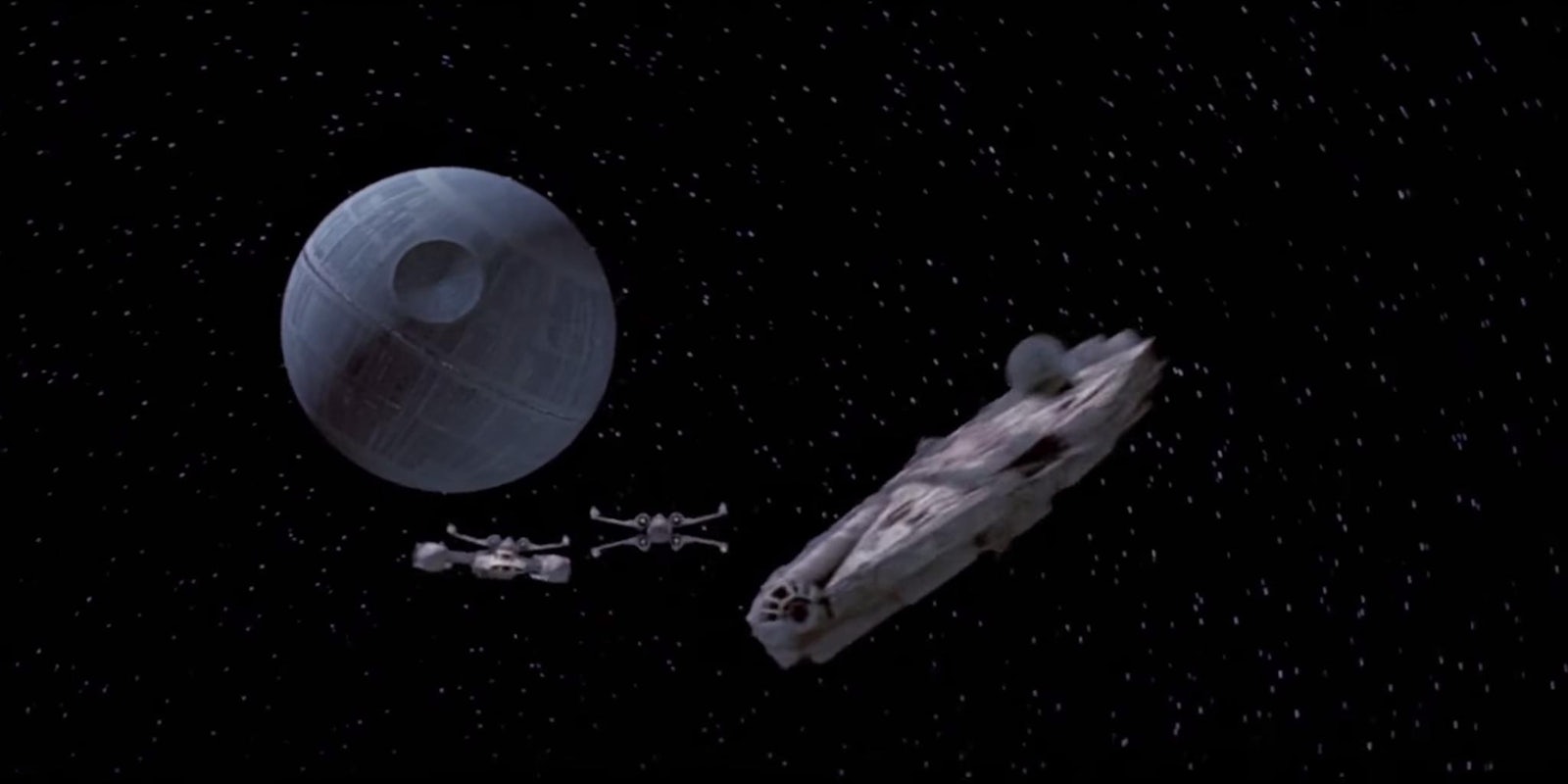The build of the second Death Star in Star Wars has spawned many a philosophical inquiry, perhaps most notably that of Clerks.
Now Ryan North, the artist behind Dinosaur Comics, posits another question: How on Earth did the Empire build the second Death Star so fast? The first planet destroyer took decades to build, and the second one appeared close to finish within a couple years.
In a blog, North republished a response from Zach Feinstein, a financial engineering professor at Washington University in St. Louis:
The economic system is that of virtually any major power during an existential war. Before the first Death Star was destroyed the rebellion was weak and could be ended by destroying the hidden base (as depicted in Episode 4). After that happened the Emperor – who, if you recall, waged both sides of an intragalactic war (see the prequel trilogy or, better yet, don’t) – would have realized this is a sign of weakness and could cause the Rebel Alliance to flourish. Now instead of a low level military budget necessary for peacetime, the Empire would have gone onto a war-footing much like the United States entering WW2.
This is, of course, ignoring the benefits of having the blueprints, supply chain, contractors, etc… already in place. The science and engineering has been done, the necessary factories were built, and since the first Death Star was destroyed after completion, those that would be overseeing and building were all safely away. For comparison: the first atomic bomb took years to build, the second took significantly less time.
To conclude: a major power at war would have near unlimited resources, and would none of the startup costs required to start construction on the second Death Star. So any economic system is possible (even a free market) as the Empire could be paying wages/contracts (capitalism) at a higher rate than any competitor or could demand everyone fall in line (centrally planned economy).
I ran this blog post by my father, Edward McKelvey, who holds a Ph.D. in economics and is a professor at Oberlin College. He also worked at the Federal Reserve Board for a number of years early in his career, and has a hobby of asking his children silly hypothetical economics questions.
He said that Feinstein’s thesis was likely correct—once the economic infrastructure was in place to manufacture, transport, and build the materials for the Death Star, making a second one would be much easier. This might seem a little crazy to us Americans—especially those too young to remember World War II—since it seems to take ages for any government projects to get done.
“In democracy the decision-making is somewhat more diffuse,” McKelvey said. “A more autocratic type of regime would probably be able to pull something like that off more efficiently.”
For example, the new World Trade Center building took a very long time to be constructed not because of the economic challenges, but because it took that long to decide when and where to build it, as well as what it should look like.
“If you had someone say ‘I want it built and I want it built right here,’ You would probably have it in a couple years,” McKelvey said.
As such, the autocratic regime of the Empire is much more conducive to building Death Stars. All it takes is one man, Emperor Palpatine, to decree its construction and the construction is under way.
But Feinstein went further:
The real economics question for the Empire is why in those 20 years did they never try basic infrastructure projects throughout the galaxy. Luke wanted to join the Rebellion because he was bored and didn’t like life as a MOISTURE FARMER in a galaxy in which robots were plentiful. Clearly spending a fraction of the money on the Death Star instead on a basic irrigation system would have prevented Luke from joining the rebellion.
First, this should have happened anyway since Luke was living with Darth Vader’s step-family who treated his mother well until she died. He wasn’t able to get pork-barrel spending for an irrigation system for them? That is either the only dictatorship without corruption ever (in which case the Emperor is actually the hero!) or Vader was just plain incompetent. Second, simple Keynesian economics would tell us that infrastructure spending would spur depressed economies (much like that on Tatooine), which in turn would appease the local populations into supporting the government and not pushing for its overthrow.
This leads to one conclusion: the Galactic Empire was destroyed because Emperor Palpatine did not understand basic macroeconomics and either was incorruptible or surrounded himself with incompetent lackeys. Ergo it was economics that brought down the Empire, not the return of the Jedi!
“It all makes sense,” North wrote. Indeed it does. This is why many dictatorships eventually fall. While investing in infrastructure and public goods to keep people complacent is clearly more rational towards holding power in the long term, “you have to have an unusual person in that role to see that,” McKelvey said.
Moreover, a dictator who wants to hold onto his or her power is more likely to spend money on ways to stay safe—i.e. military and defense. And boy, if the Death Star isn’t one hell of a military vehicle.
So basically, Emperor Palpatine was your garden variety dictator, making ill-advised decisions and yes, probably advised by incompetent lackeys.
Screengrab via Marcelo Zuniga/YouTube


